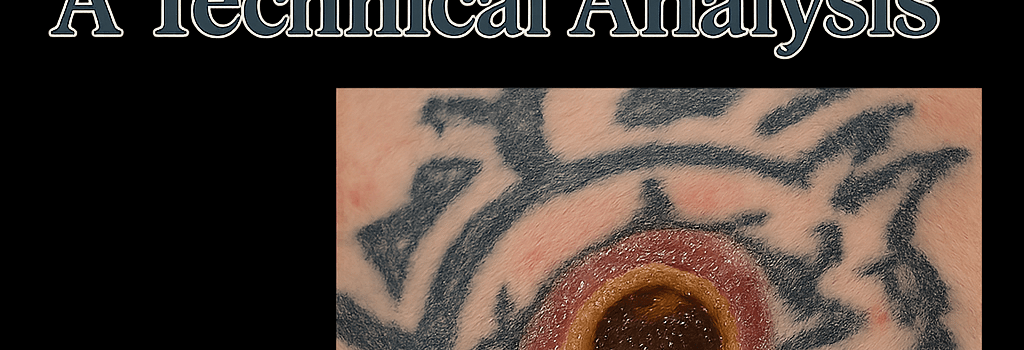Tattoo-Associated Necrotic Ulceration: A Technical Analysis

Case Overview
A 20-year-old male in China presented five months after receiving a red-ink cross tattoo on his anterior cervical region. The tattoo pigment had completely disappeared, and the patient developed a rapidly expanding, crusting, bleeding ulcer with surrounding induration and bilateral neck swelling. No pathogenic organisms were isolated on bacterial, fungal, or mycobacterial cultures, yet magnetic resonance imaging (MRI) and contrast-enhanced computed tomography (CT) revealed extensive necrosis, granulomatous lymphadenopathy, and bilateral internal jugular vein thrombosis.
Clinical Presentation and Surgical Management
- Lesion morphology: 4 cm × 3 cm deep necrotic ulcer with undermined edges, purulent exudate, and violaceous margin.
- Imaging findings: MRI T2‐weighted images showed hyperintense nodal masses abutting the carotid sheath; CT venography confirmed occlusion of both internal jugular veins with collateral venous channels.
- Surgical intervention: Wide local excision of ulcer and necrotic lymph nodes; ligation and resection of thrombosed jugular segments; reconstruction with free anterolateral thigh (ALT) cutaneous flap, microvascular anastomoses to superior thyroid vessels.
Pathophysiology of Tattoo-Induced Granulomatous Reactions
Red tattoo pigments often contain organic azo dyes (e.g., Sudan I, Pigment Red 22) and heavy metal salts (mercury sulfide, cadmium selenide). These compounds can act as haptens, triggering a type IV delayed-hypersensitivity response. Dermal macrophages phagocytose pigment particles and transport them to regional lymph nodes, where they may incite granuloma formation. In rare instances, an exaggerated granulomatous lymphadenitis leads to extensive cytokine release (TNF-α, IFN-γ), endothelial activation, and a prothrombotic state.
“We believe the patient experienced an aberrant T-cell–mediated reaction to red azo pigments, leading to granuloma formation and venous thrombosis,” said Dr. Li Wang, lead otolaryngologist at Zhejiang University School of Medicine.
Diagnostic Imaging and Histopathology
- MRI Protocol: High-resolution 3 T MRI with fat suppression; T1-weighted post-contrast sequences highlighted rim enhancement around necrotic cores.
- CT Venography: Multiplanar reformats showed filling defects in the jugular veins and collateralization; density measurements ruled out external compression.
- Histology: Hematoxylin and eosin stains demonstrated noncaseating granulomas, fibrinoid necrosis in vessel walls, and pigment-free dermal scarring. Immunohistochemistry was positive for CD68+ macrophages and CD4+ T lymphocytes without microbial antigens.
Regulatory and Industry Implications
Recent regulatory reviews by the FDA and European Chemicals Agency (ECHA) have identified over 100 tattoo ink compounds under scrutiny for cytotoxicity and genotoxicity. In 2024, the EU restricted certain azo dye classes in cosmetic applications, but enforcement remains uneven. Tattoo parlors and ink manufacturers are urged to adopt ISO 17234 pigment purity standards and provide full ingredient disclosure.
Expert Recommendations
- Pre-tattoo screening for metal hypersensitivity (patch testing for mercury and cadmium).
- Use of ISO-compliant inert pigments (e.g., titanium dioxide, iron oxides).
- Post-procedure surveillance with duplex ultrasonography if deep swelling occurs.
- Multidisciplinary management involving dermatology, otolaryngology, and vascular surgery.
Future Research Directions
To elucidate mechanisms, investigators propose single-cell RNA sequencing of tissue specimens, aiming to map the immune cell subsets driving granulomatous necrosis. In parallel, in vivo models using transgenic mice could replicate pigment-induced thrombophilia, guiding safer ink formulations.
Conclusion
This unprecedented case of necrotic ulceration post-tattoo underscores the spectrum of tattoo-associated pathology. Clinicians and ink manufacturers must recognize these rare but severe complications to improve patient safety and industry standards.